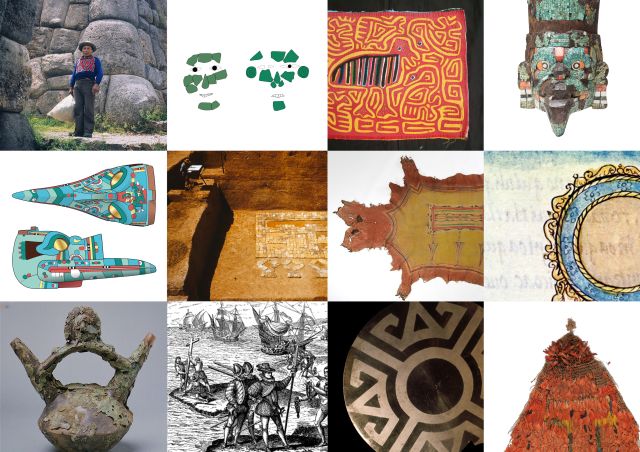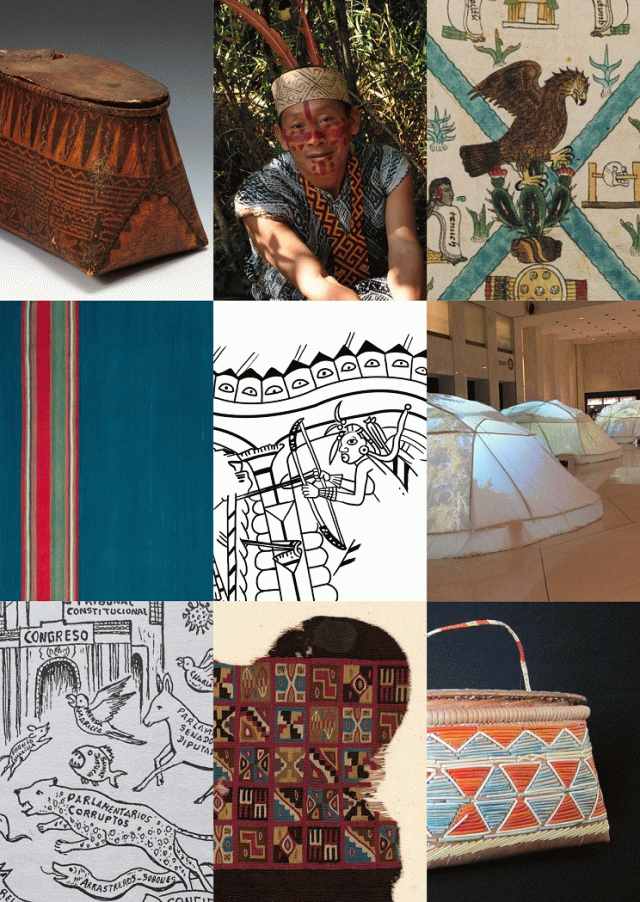Tagung
Interplay between materialities and sensory experiences
In the framework of the symposium Amerindian Art Histories and Archaeologies: A KHI – UCL Symposium on Material Transformations in the Indigenous Americas
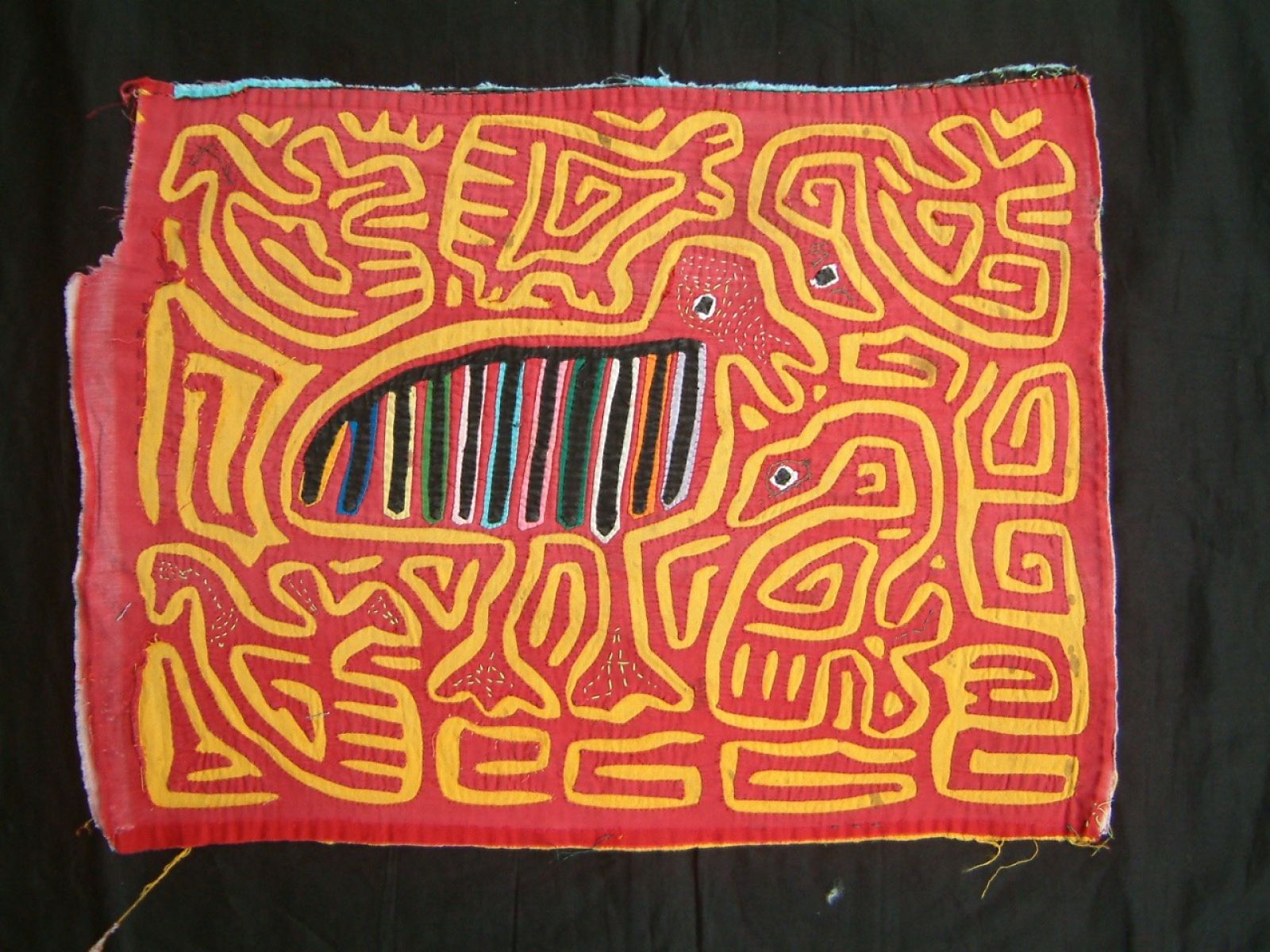
Mola, multilayered fabric panel part of Guna women’s dress (photo by Paolo Fortis, 2003).
Speakers
Nicholas J. Saunders | Radiating light: Amerindian reflections on brilliant matter
Abstract
What is material culture? Something made by hand, or perhaps just handled? To what extent is the same object ‘re-made’ when observed/handled by different hands from different cultures, either contemporary or distant in time and/or space? These are challenging universal issues and come together here in an exploration of Amerindian shiny matter –objects that reflect light– made by human hands or ‘received’ from Nature and handled by people. And what of knowledge, ideas, and spirituality, where ‘sparkle’, ‘shine’, and ‘glowing’ can describe metaphysical principles of life, death, and the supernatural?
Biography
Nicholas Saunders is Emeritus Professor of Material Culture in the Department of Anthropology and Archaeology at the University of Bristol. He has conducted research on pre-Columbian America in the Caribbean, Mexico, and Peru, specializing in symbolism and worldview. His most recent research concerns indigenous aesthetics of light, brilliance, and color. He also researches modern conflict archaeology in Europe and the Middle East. Among his numerous publications are “Shimmering Worlds: Brilliance, Power, and Gold in Pre-Columbian Panama”, “Obsidian Mirror or Portable Altar”, “A Dark Light: Reflections on Obsidian in Mesoamerica”, “Biographies of brilliance: Pearls, transformations of matter and being”, and “Stealers of light, traders in brilliance: Amerindian metaphysics in the mirror of conquest”.
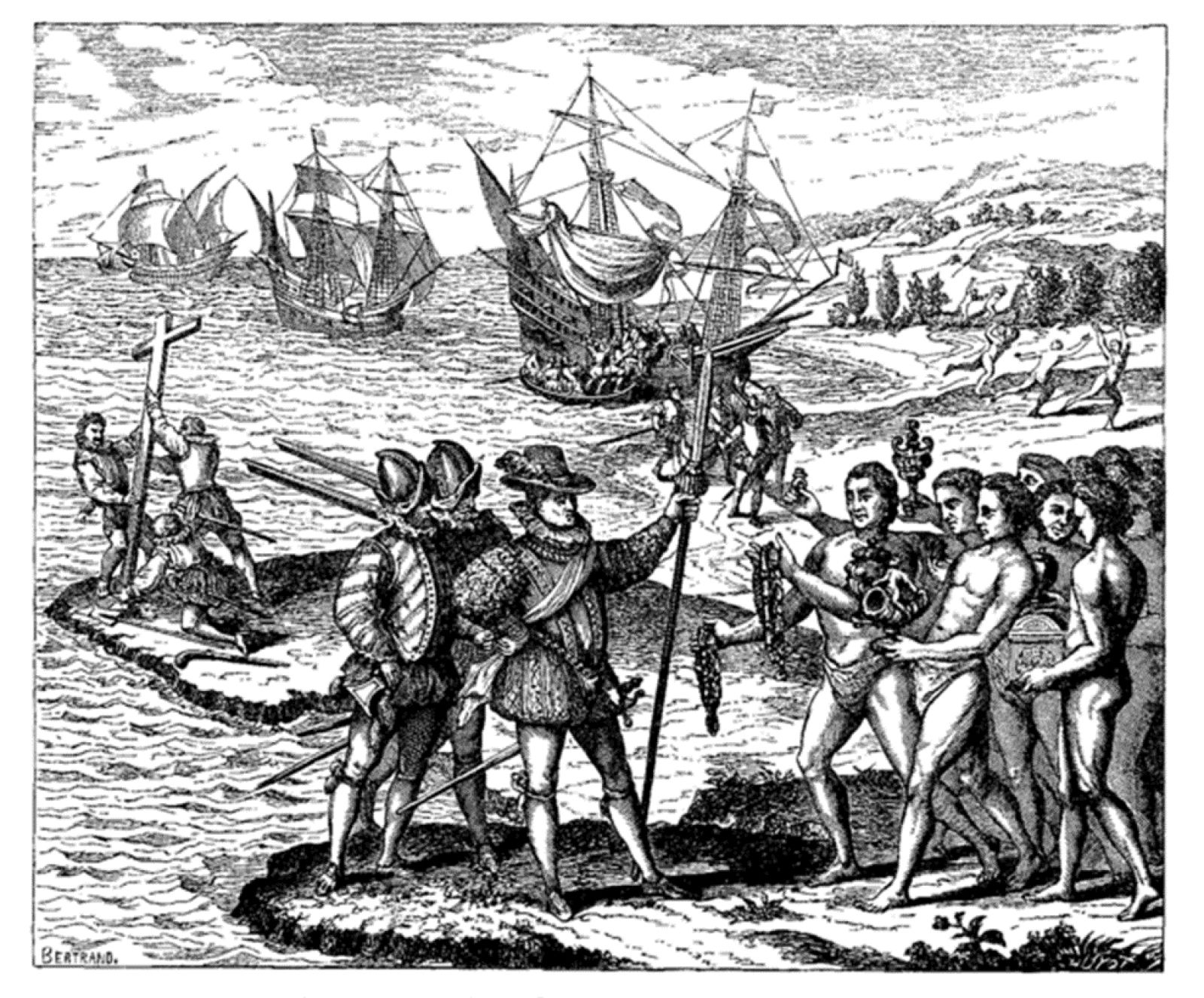
Theodore de Bry, Christopher Columbus arrives in America, 1594, engraving, 18.6 x 19.6 cm (from Collected travels in the east Indies and west Indies, vol. 4, by Girolamo Benzoni).
Max Carocci | Modes of inscription: painted robes from the Northern North American Plains
Abstract
Northern Plains Robes display remarkable similarities to tattoo and ceramic patterns found in protohistoric and historical expressions. The paper argues that, in addition to the actual designs that decorate both human bodies and animal skins, the very action of inscribing a surface brings cultural significance to the support on which distinctive marks appear. The acts of inscription examined here encourage us to rethink the role and function of iconography among protohistoric and early historic peoples of the Northern Plains of North America, by incorporating culturally-established modes of operation that challenge formal analyses to expand our understanding of graphisms across the Americas.
Biography
Max Carocci is Adjunct Professor of Art History and Visual Culture at the Richmond American University in London. Over the past twenty years he has been teaching anthropology, art, visual and material culture in a variety of universities across the UK. He served as curator at the British Museum, the Weltkulturen Museum Frankfurt, the Venice Biennale, and other private institutions and learned societies in Britain and abroad. His research has been published in World Arts, Time and Mind, Cosmos, American Indian Art Magazine, American Indian Culture and Research Journal, Religions, Journal of Ritual Studies, Textile, and Journal of Museum Ethnographers, among others. Max’s work focuses on different aspects of Indigenous North American aesthetics, and expressive cultures with a particular emphasis on relational anthropologies of art, and new materialism. Among his latest publications, Art, Observation, and an Anthropology of Illustration (co-edited with Stephanie Pratt, Bloomsbury, 2022), and Art, Shamanism and Animism (co-edited with Robert J. Wallis, MDPI: Basel, 2022). Max is currently working on a joint project with Native American art historian Stephanie Pratt on Native American visual representations of colonists and other foreigners.
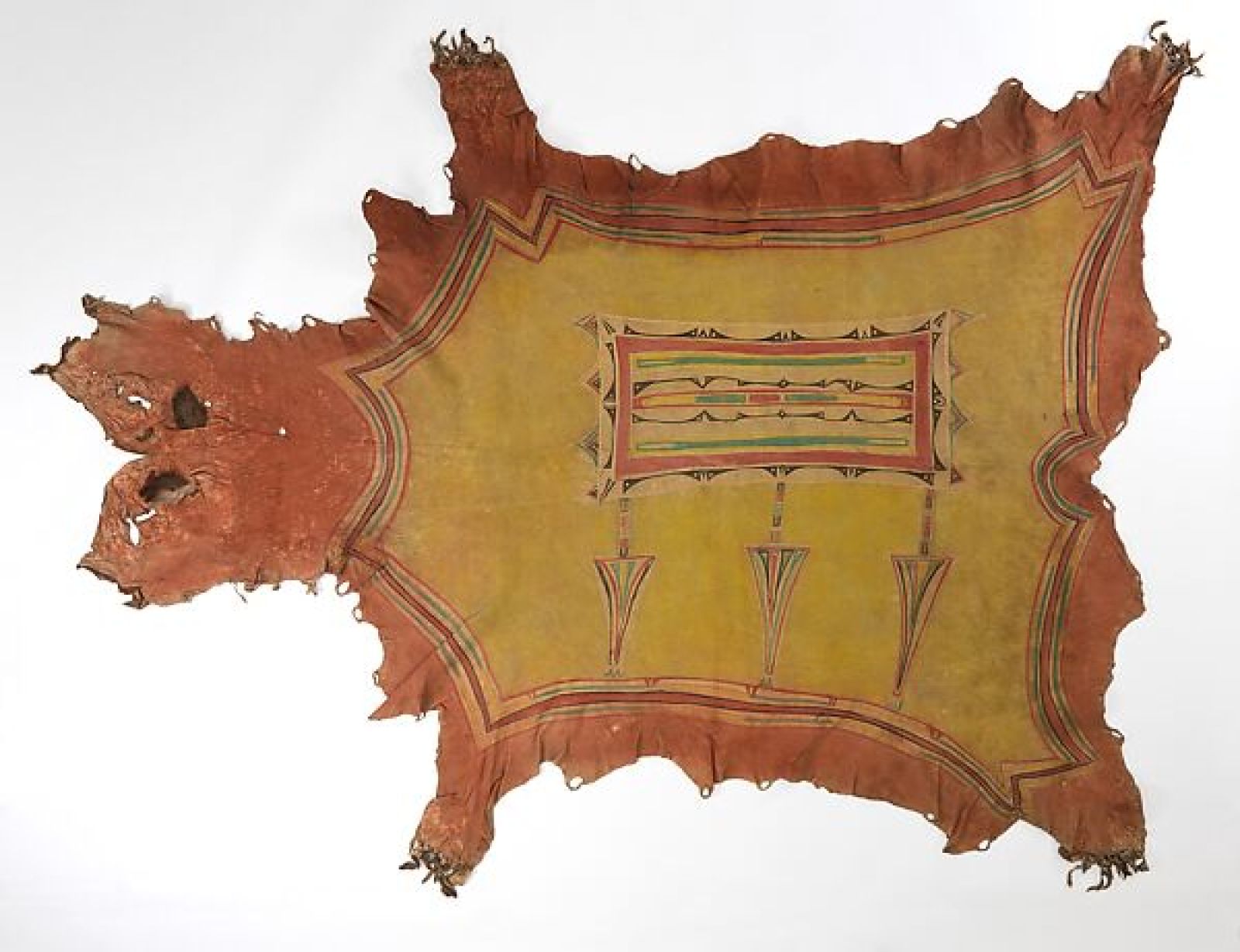
Arapaho woman’s robe, 1865 (Metropolitan Museum NYC).
Paolo Fortis | Figurations of time: the visual and the material of Guna historical experience
Abstract
In this presentation I address issues regarding the temporal qualities of indigenous material and visual culture: how objects can shape the social understanding of time. Drawing on ethnographic research over the past twenty years with Guna people living on the San Blas Archipelago of Panama and with museum collections, I seek an approach to discuss how pasts, presents and futures are remembered, understood, shaped and projected in ways that a singular emphasis on oral histories fails to capture. This matters particularly in the context of conflicting views of time and history between indigenous and national societies. Framing these issues within anthropological debates on temporality and material and visual culture, I deal with Guna ontology via the images of time generated by ritual and mundane objects, showing a path toward interpreting the temporality of images in Amerindian lived worlds.
Biography
Paolo Fortis is Associate Professor in the Anthropology Department at Durham University. He holds a PhD (2008) in Social Anthropology from the University of St Andrews and has conducted fieldwork with Guna people from the San Blas Archipelago of Panama over the past twenty years. His research and publications deal with Amerindian visual and material cultures, notions of the person, ecology, cosmology, and more recently time and history. He is author of Kuna Art and Shamanism (2012) and editor (with Susanne Küchler) of Time and Its Object (2021). He has collaborated with ethnographic and art museums and is editor of the Anthropology of Art Publication Series of the Royal Anthropological Institute.
Diana Magaloni | Discussant
Biography
Diana Magaloni is a renowned art historian, author, curator, and conservator. She is currently Deputy Director, Program Director of the Art of the Ancient Americas (2014-23), and the Conservation Center Director at the Los Angeles County Museum of Art (2019-23). She holds a Ph.D. in Art History from Yale University, an M.A. in Art History from the Universidad Nacional Autónoma de México (UNAM), and a B.A. in Conservation from the Instituto Nacional de Antropología e Historia (INAH). She was Director of the Museo Nacional de Antropología in Mexico City (2009-13), and a researcher and professor at UNAM (1991-2014). Her research has focused on developing methodologies to understand the originality of the artistic and aesthetic processes of ancient America’s Indigenous cultures. She has published extensively, including the books Colors of the New World: Materials, Artists, and the Creation of the Florentine Codex (2014) and Albores de la Conquista (2017), which won the Antonio García Cubas award for an outstanding publication in anthropology and history. She has curated numerous groundbreaking exhibitions, including Picasso and Rivera: Conversations Across Time (LACMA, 2017), which received the 2018 Award for Excellence from the Association of Art Museum Curators, and is a co-curator of the internationally touring show The Portable Universe/El Universo En Tus Manos: Thought and Splendor of Indigenous Colombia (2022-24).
The KHI – UCL symposium convenes art historians, archaeologists, anthropologists and curators who share interests in the transformative potential of matter and materials stemming from different social and aesthetic practices. These practices are manifest in creative works produced by indigenous peoples across the Americas from ancient times to the present. In each of the four sessions, three researchers will bring into conversation case studies from a diverse set of indigenous cultural traditions and address a specific type of materiality. Namely, they will address the materiality of stones, metals, colour, as well as multi-materiality and multisensory creations and experiences, their functions, uses and reception from ancient, colonial and contemporary indigenous societies from Brazil, the Central Andes, Panama, Mesoamerica and North America. It is organized by Sanja Savkić Šebek (KHI in Florenz – Max-Planck-Institut & Humboldt-Universität zu Berlin) and Bat-ami Artzi (CSoC, Ben-Gurion University of the Negev; former 4A_Lab Fellow), in collaboration with Elizabeth Baquedano (UCL Institute of Archaeology).
01. Februar 2023, 17:00 Uhr
The event will take place online.
To participate please register in advance via Zoom: https://zoom.us/meeting/register/tJAqceChrT8vG9FB7PhoS9zfJhTy4M55_ZbD
After registering, you will receive a confirmation email containing information about joining the meeting.
Hinweis
Diese Veranstaltung wird durch Fotografien und/oder Videoaufnahmen dokumentiert. Falls es nicht Ihre Zustimmung findet, dass das Kunsthistorische Institut in Florenz Aufnahmen, auf denen Sie erkennbar abgebildet sein könnten, für die Veranstaltungsdokumentation und Öffentlichkeitsarbeit (z.B. Social Media) verwendet, bitten wir um eine entsprechende Rückmeldung.



